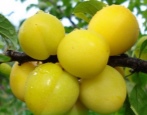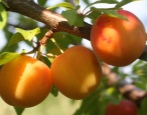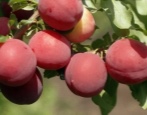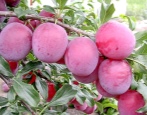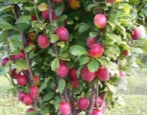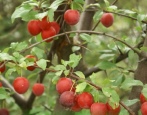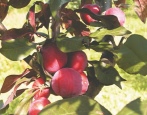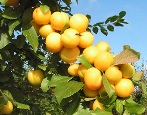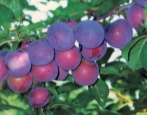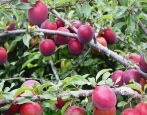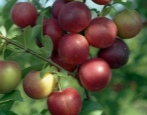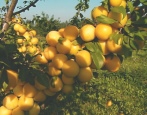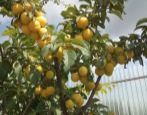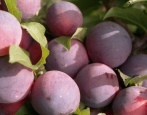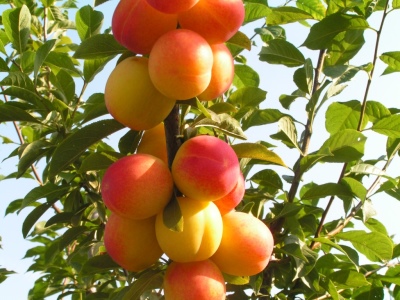
- Growth type: medium-sized
- Self-fertility: self-infertile
- Fruit size: very large
- Yield: high
- Appointment: for fresh consumption
- Fruit weight, g: more than 35
- Fruit shape: round-ovoid
- Fruit color: bright yellow, with red streaks
- Pulp color : greenish yellow
- Pulp (consistency): tender, juicy
Growing cherry plum Vetraz 2, like many other plant varieties, is a kind of challenge for gardeners. However, it is best to respond to this challenge “fully armed with facts”. And that is why complete and up-to-date information is urgently needed.
Description of the variety
The plant is ideal for fresh consumption. It forms medium-sized trunks. The crown rises slightly above the trunk. It is flat and moderately thick.
Fruit characteristics
With her, the whole thing is simple:
drupes are very large, weighing at least 35 g;
in shape, the fruit of Vetrazi 2 is intermediate between the circle and the egg;
predominantly bright yellow color is found;
the stone reaches an average size, it separates from the soft part without problems.
Taste qualities
The bright yellow drupe with an expressive red streak inside contains a delicate greenish-yellow pulp. Not only tenderness is noted, but also its juiciness. In general, a sweet and sour taste balance is maintained. Tasting examination gives this variety an average rating of 4.6 points.
Ripening and fruiting
You can wait for the appearance of fruits at 2 or 3 years of development of Vetraz 2 cherry plum. Usually the harvest time comes in the second decade of August. As soon as the culture has pleased with the first collection, there is almost no doubt that in the next season they will also go regularly. On the only condition that gardeners will not make mistakes and the weather will not let you down.
Yield
According to this indicator, the variety favorably stands out among the entire assortment of cherry plum varieties. In case of plantation cultivation, the harvest averages 25 tons per hectare. In the most favorable conditions, it reaches 28 tons. This spread emphasizes the importance of the efforts being made.
Self-fertility and the need for pollinators
Wind 2 is self-fertile. To pollinate it, you need to plant Asaloda or the Traveler. It will not be a big mistake to plant both of these plants for more productive pollination.
Growing and care
There are no specific cultivation nuances of the Vetraz 2 variety. The plant does not tolerate excess moisture. Therefore, it makes no sense to place plants in the lowlands. Excessive watering is also inappropriate. They increase it several times compared to the usual rate only with the onset of extreme heat and drought.
The soil can be improved by adding fluff. Its amount is 0.4-0.8 kg per 1 m2. If the land is acidic, dolomite flour can be used every 2-3 years. Its quantity is even allowed to be exceeded. The width and depth of the planting holes is from 0.6 to 0.8 m.
Feeding rates (per 1 sq. M.) Are equal:
humus or compost - 10 kg;
urea - 25 g;
superphosphate (double) - 60 (30) g;
potassium chloride - 20 g;
wood ash - 0.2 kg.
If the plant is mature and actively producing fruit, these numbers can be increased by 20-30%. It is necessary to prune the crop in early spring. Be sure to eliminate all thickening, excessively dry and damaged branches, as well as those that are incorrectly located or intersected. It is necessary to start treating against infection with infections in early spring, because it is then that the culture can get diseases. Mulching and water charging are strictly required.
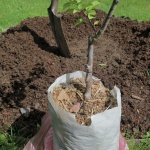
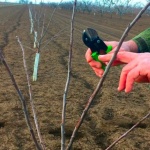
Disease and pest resistance
The plant can survive the fungal attack quite well. At the same time, it is also noted that it is almost completely immune to defeat by clasterosporiosis. Of course, it still does not follow from this that it is possible to completely abandon preventive treatments and agrotechnical protection measures.
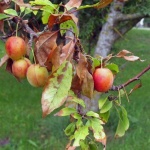
Requirements for soil and climatic conditions
The variety is winter-hardy. In the middle lane, the requirements for cover will be minimal. However, in more northern regions, or when a particularly cold winter sets in, it is necessary to protect the culture. The support mode in hot conditions is the same as for other fruit plants.



